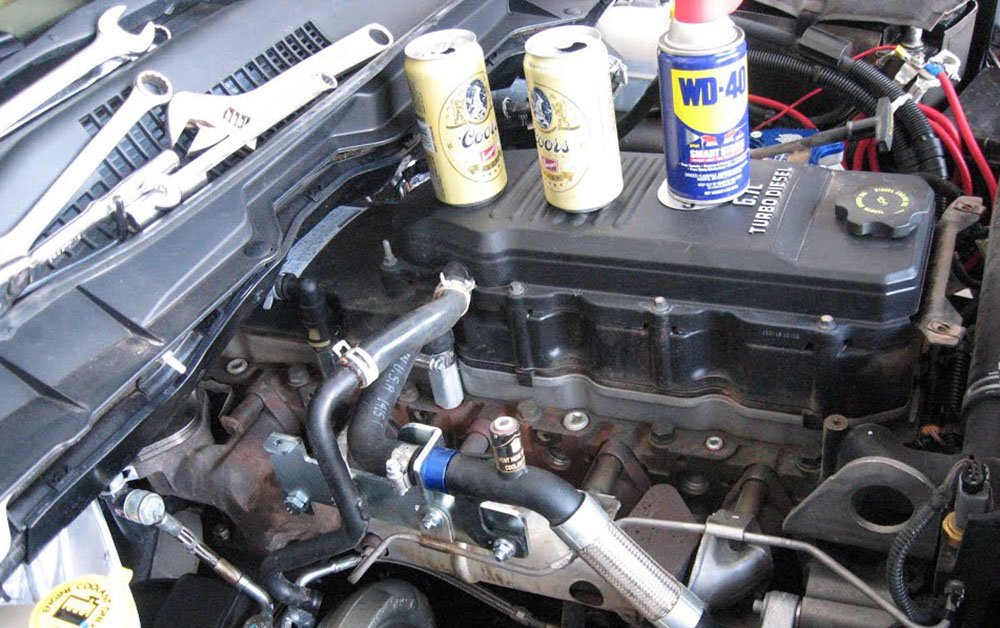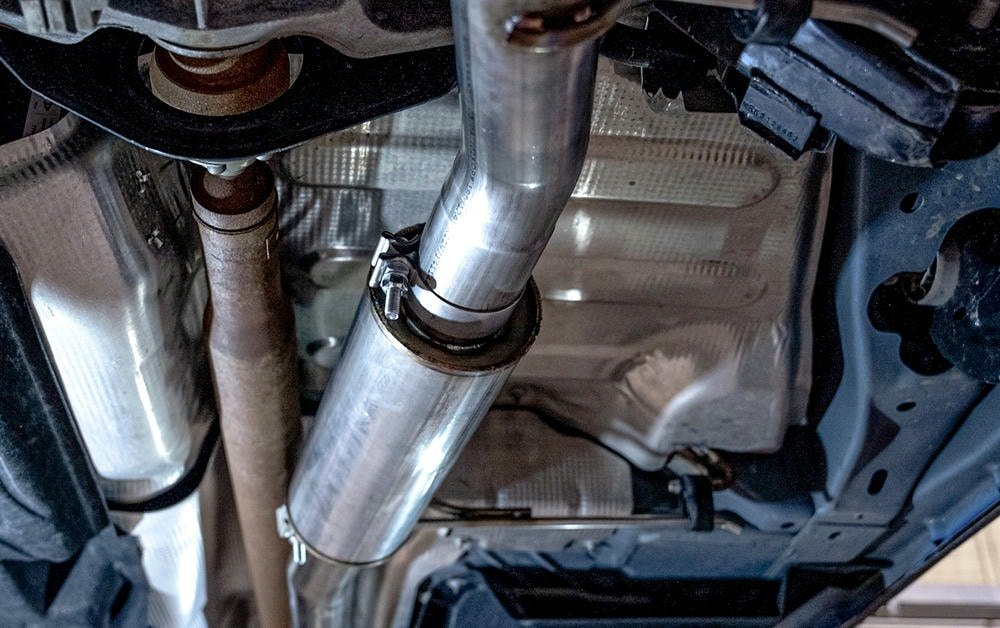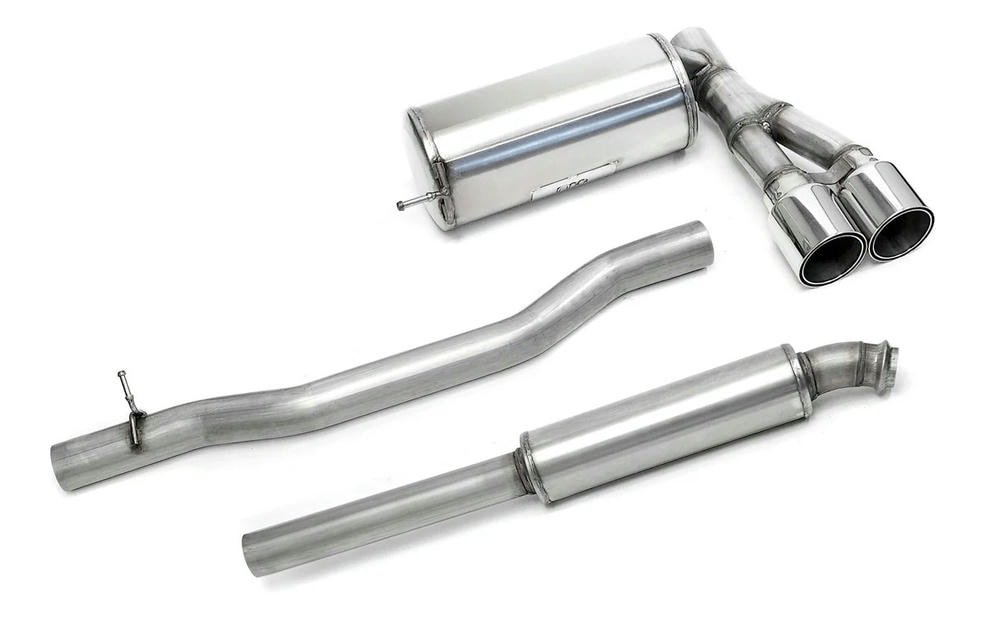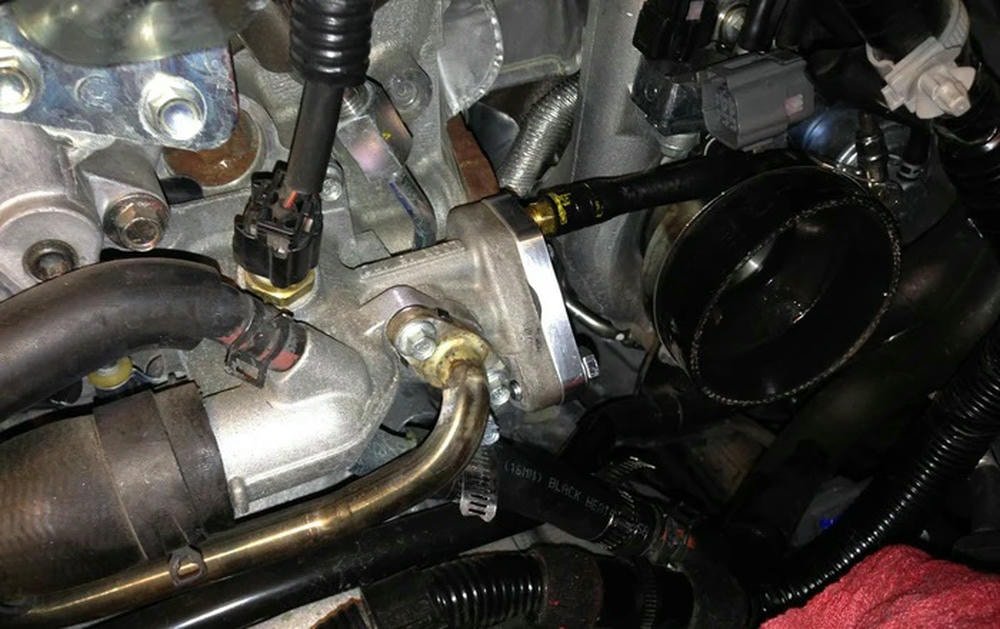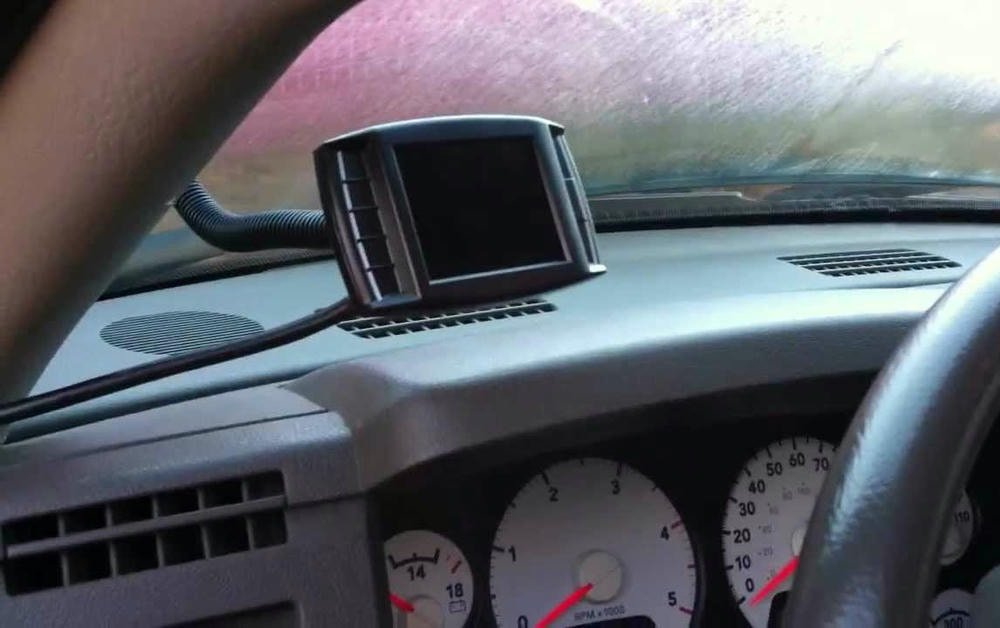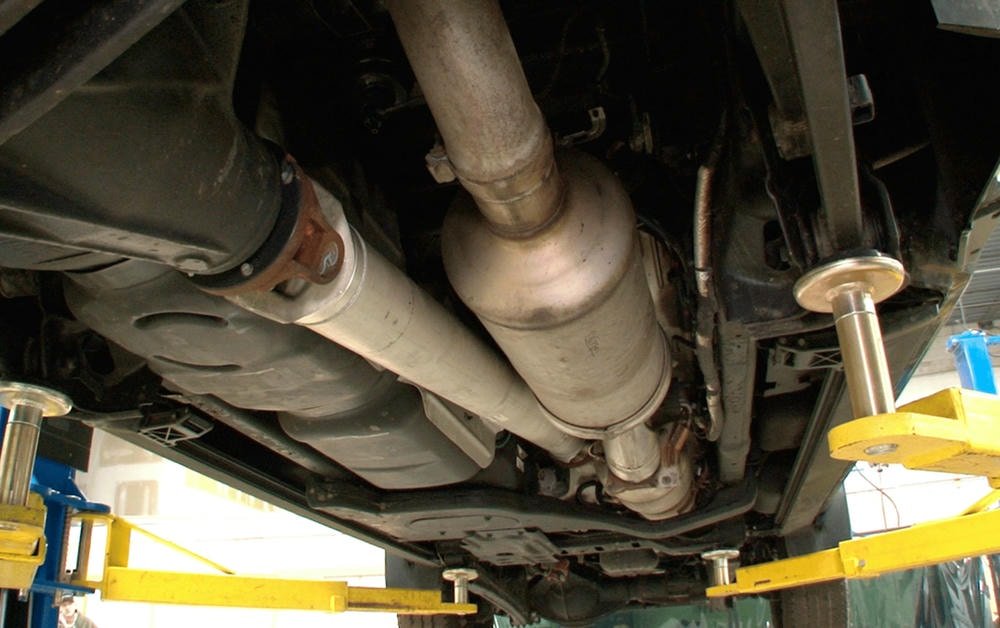EGR delete kits help diesel truck owners by removing or bypassing the exhaust gas recirculation system. This move aims to boost performance and fuel efficiency. But, it’s not all smooth sailing.
Removing the EGR can lead to error messages, leaks in the exhaust, higher engine temperatures, and more nitrogen oxides going into the air. These issues demand attention to keep trucks running right.
Truck drivers often use special tools or computer programs after taking out the EGR system. This stops warning lights from turning on by convincing the truck’s computer that everything is fine.
To get through vehicle checks with an EGR delete kit, keeping up with upkeep and knowing diesel emission laws is key. Any slip could mean fines or having to put back parts.
Looking for leaks and using devices like temperature gauges can catch problems early. This keeps the engine safe from harm. Adding certain chemicals to fuel might lower nitrogen oxide levels in trucks without their EGR systems intact.
It’s also smart to watch for new rules on modifying trucks.
The next steps will share how fixing current problems while preventing new ones takes regular care and know-how.
Table of Contents
ToggleCommon Problems
Deleting the EGR system might sound good for more power, but it brings trouble too. Owners face annoying warning lights and error messages, leaks in the exhaust, and even engines getting too hot.
Error Codes and Warning Lights
Truck owners often see error codes and warning lights after installing EGR delete kits. These signals mean the truck’s computer found something wrong. Since the EGR system is not there, the computer thinks there is a problem.
This can turn on the check engine light.
I thought my diesel was ready to hit the road with no issues after installing an EGR delete kit, but then those pesky lights came on.
To fix this, some use tuning devices or software meant for diesel vehicles like Cummins or Powerstroke engines. These tools tell the computer everything is okay, even without the EGR system.
It’s common to need these adjustments after removing parts of your emission control system.
Exhaust Leaks
Exhaust leaks are a big problem for diesel truck owners who choose to delete their EGR valves. These leaks can happen at weak spots like the manifold or where parts connect. A leak sends exhaust gases into places they shouldn’t go, hurting engine performance and turbocharger efficiency.
This means less power and more stress on your truck’s engine.
One diesel truck owner shared his struggle with fixing an exhaust leak after removing his EGR system. He found that checking the installation carefully helped him find small gaps that were causing big problems.
Sealing these leaks made his truck run better and protected his engine from damage. Diesel particulate filters and oil coolers also work harder when there are exhaust leaks, leading to more issues down the road if not fixed right away.
Increased NOx Emissions
Removing the EGR system in diesel trucks can lead to more NOx gases getting out. These gases are bad for the air we breathe. A truck owner found that without an EGR, their Dodge Ram sent out more of these harmful gases.
This is because the EGR helps lower the engine’s temperature, cutting down on NOx production.
More NOx emissions mean failing vehicle inspections and harming the environment. Diesel engines like Powerstrokes and those in Dodge Rams need to keep these emissions low to meet legal standards.
Without an EGR, it gets harder to pass checks focused on keeping air clean. Owners might face fines or have to make costly fixes. It shows how vital regular maintenance and understanding your diesel engine’s needs are for both performance and following laws.
Engine Overheating
Engine overheating can hit diesel truck owners hard, especially after installing an EGR delete kit. The process cuts off a route for cooling the engine. Without it, the engine works hotter than usual.
This heat build-up may cause severe damage to parts like head gaskets and power stroke diesel engines.
Owners see this trouble during long drives or high boost situations. A friend once shared how his truck’s temperature spiked unexpectedly on a freeway trip. He had to pull over to let things cool down, a clear sign of overheating due to the EGR delete.
An ounce of prevention is worth a pound of cure, applies perfectly here.
Regular checks on your coolant system help catch signs early. Monitoring tools like map sensors also give clues on efficiency and temperature control. Keep your engine clean and watch out for small leaks that could be early warnings.
Issues with Vehicle Inspection
Having an EGR delete kit can lead to problems during vehicle inspections. Many states check for proper emissions equipment. A missing EGR system often fails this test. Diesel truck owners might face fines or be told to put the original parts back on their trucks.
One diesel truck owner shared his story. He had removed his EGR system, thinking it would improve engine efficiency and throttle response. But, he failed the state inspection miserably because of increased NOx emissions and missing equipment.
He had to spend extra money to replace the parts he removed just to pass inspection. This shows that messing with the EGR can cost more in the long run, especially when it’s time for inspection.
Troubleshooting and Fixing Issues
Fixing problems with EGR delete kits can feel like a puzzle. You might need to reset the computer in your truck or check for leaks.
Resetting and Reprogramming the ECU
Resetting and reprogramming the engine computer unit (ECU) are key steps after installing an EGR delete kit. This process tells your truck’s brain to adjust to the new setup. Without this, you might face weird engine behaviors or poor performance.
Think of it as updating software on a computer. You use diesel tuning software and sometimes specific tools for this job. It makes sure the truck runs smoothly with its new configuration.
A friend shared their experience with reprogramming the ECU in their diesel truck. They used a custom tuning setup tool they got online. After following simple steps, their truck responded better than ever before.
The mileage improved, and there was no more engine knocking – common issues after an EGR delete without ECU adjustments.
Checking Installation for Leaks
After installing an EGR delete kit, it’s critical to check for leaks. A tiny leak can lead to big problems like engine overheating or increased emissions. You use a flashlight and your hands to feel around the installation area.
Look for any signs of exhaust gas escaping. These gases are hot and dangerous, so be careful.
A diesel truck owner shared their experience: “I thought my EGR delete was perfect until I found a small leak near the head-gasket. That tiny gap was causing all sorts of trouble.” They fixed the leak by tightening some bolts and replacing a damaged gasket.
Always double-check your work for leaks; it can save you from big headaches later on.
Monitoring Exhaust Gas Temperatures
Keeping an eye on exhaust gas temperatures (EGTs) is key for diesel trucks, especially after fitting an EGR delete kit. High EGTs can harm engine parts over time. A good tool here is a pyrometer, a device that measures these high temps.
It helps in troubleshooting tuning devices and fixing EGR delete kit problems by catching heat issues early.
For proper engine cleaning and performance tuning, watching those temperatures helps avoid overheating. It’s simple: lower EGTs mean a cooler-running engine and less risk of damage.
This step ensures the diesel truck runs smoothly, making maintenance tips more effective for every owner out there.
Addressing Emissions Concerns
EGR delete kits can lead to higher NOx emissions, troubling truck owners about the impact on air quality. NOx emissions play a big role in air pollution, causing health problems and harming the environment.
Truck drivers who use EGR delete kits need to find ways to reduce these emissions. One approach is using fuel additives that lower emission levels. These additives work by making the diesel burn cleaner, thus cutting down on harmful gases released into the atmosphere.
Another method involves installing aftermarket exhaust parts that are designed for low emissions. These parts replace or work alongside EGR delete kits to control pollution better.
Also, keeping an eye on engine performance through regular diagnostics helps catch any issues early on that may increase emissions. This way, truck owners can enjoy the benefits of their EGR delete while taking steps to protect air quality around them.
Preventing Future Issues
To keep your diesel truck in good shape and avoid EGR delete kit problems, staying on top of upkeep is key. This means regular checks and making sure everything’s put in right from the start.
Keep up with changes in laws too, so you’re always in the clear. Find out more to keep your ride running smooth.
Regular Maintenance and Inspections
Keeping your diesel truck running smoothly means staying on top of regular maintenance and checks. This isn’t just about changing oil or checking tire pressure. For those with EGR delete kits, it’s crucial to check parts like the exhaust system and coolant levels often.
These steps can stop small issues from becoming big problems.
One diesel truck owner shared that he makes a habit of inspecting his vehicle’s exhaust for leaks every few months. He also keeps an eye on engine temperatures to catch overheating early.
By doing these simple tasks, he avoids trouble during vehicle inspections and keeps emission levels in check. It’s all about knowing your truck inside out and catching warning signs before they lead to bigger troubles like engine damage or failed emissions tests.
Ensuring Proper Installation
Getting an EGR delete kit set up right can save a diesel truck owner from a lot of headaches down the road. The key is making sure everything is put in place correctly from the start.
This means double-checking that all parts fit well and are secure. Sometimes, even small air leaks can lead to big problems like engine overheating or increased emissions.
A friend learned this the hard way after his truck started acting up post-installation. He missed a tiny exhaust leak during installation which led to issues with his vehicle inspection later on.
He had to go back, find the problem, and fix it – wasting both time and money. To avoid such troubles, it helps to follow a detailed maintenance guide for EGR delete kits. Also, keeping an eye on diesel engine diagnostics plays a crucial role in catching any potential issues early on before they become major problems.
Staying Informed on Legal Changes
Laws about diesel trucks change often. Owners need to keep up with these changes to avoid problems. Some states have strict rules against EGR delete kits. They see them as bad for air quality.
Using an EGR delete kit could mean big fines or failing vehicle inspections.
The best plan is to check the latest laws in your area. Websites and forums for diesel truck owners can help a lot. They share news on legal matters and give tips on how to stay within the law while improving your truck’s performance.
Talking to experts who know about diesel engines can also provide valuable insights into what’s allowed and what’s not.
Conclusion
EGR delete kits often come with their share of problems. Diesel truck owners look for ways to solve these issues. John Carter, an expert mechanic with over 20 years in diesel engine repair, shares his thoughts.
He has a degree in automotive technology and countless hours spent on research and development related to diesel engines.
Carter explains that the main goal of EGR delete kits is to improve engine efficiency and performance. But they do lead to error codes, exhaust leaks, and more NOx gases getting out into the air.
These problems can make trucks harder to manage.
He talks about how important safety and honesty are in this field. Makers of these kits need to follow rules and be clear about what their products do.
Carter suggests regular check-ups and correct installation as ways to avoid trouble with EGR delete kits. He says it’s also key for truck owners to keep up with any new laws about emissions.
Comparing EGR delete kits to other options on the market, Carter notes both good points and bad points. On one side, these kits can boost power; on the other, they might cause legal headaches because of emission standards.
His final word? Think carefully before choosing an EGR delete kit for your diesel truck. Be sure it meets your needs but also stays within legal limits.
FAQs
What are some common EGR delete kit issues I might face?
You could encounter a few hiccups with your EGR delete kit, such as reduced engine performance or error codes popping up on your dashboard. These are typical problems linked to the removal of the Exhaust Gas Recirculation (EGR) system.
How can I troubleshoot these EGR delete problems?
To tackle any issues you’re having with your EGR delete kit, start by checking if there’s an issue with the installation itself. Also, make sure all components are in good shape and properly connected.
Are there any specific tips for troubleshooting my EGR delete kit?
Sure thing! Keep an eye out for warning lights on your dashboard – they’re usually the first sign something’s not right. Regular maintenance checks also go a long way in preventing potential problems down the line.
Do you have any advice for maintaining my EGR Delete Kit to avoid future issues?
Absolutely! Regularly inspecting all components of your EGR delete kit is crucial to avoid future headaches. This includes checking for loose connections or signs of wear and tear that could lead to bigger problems if left unattended.

